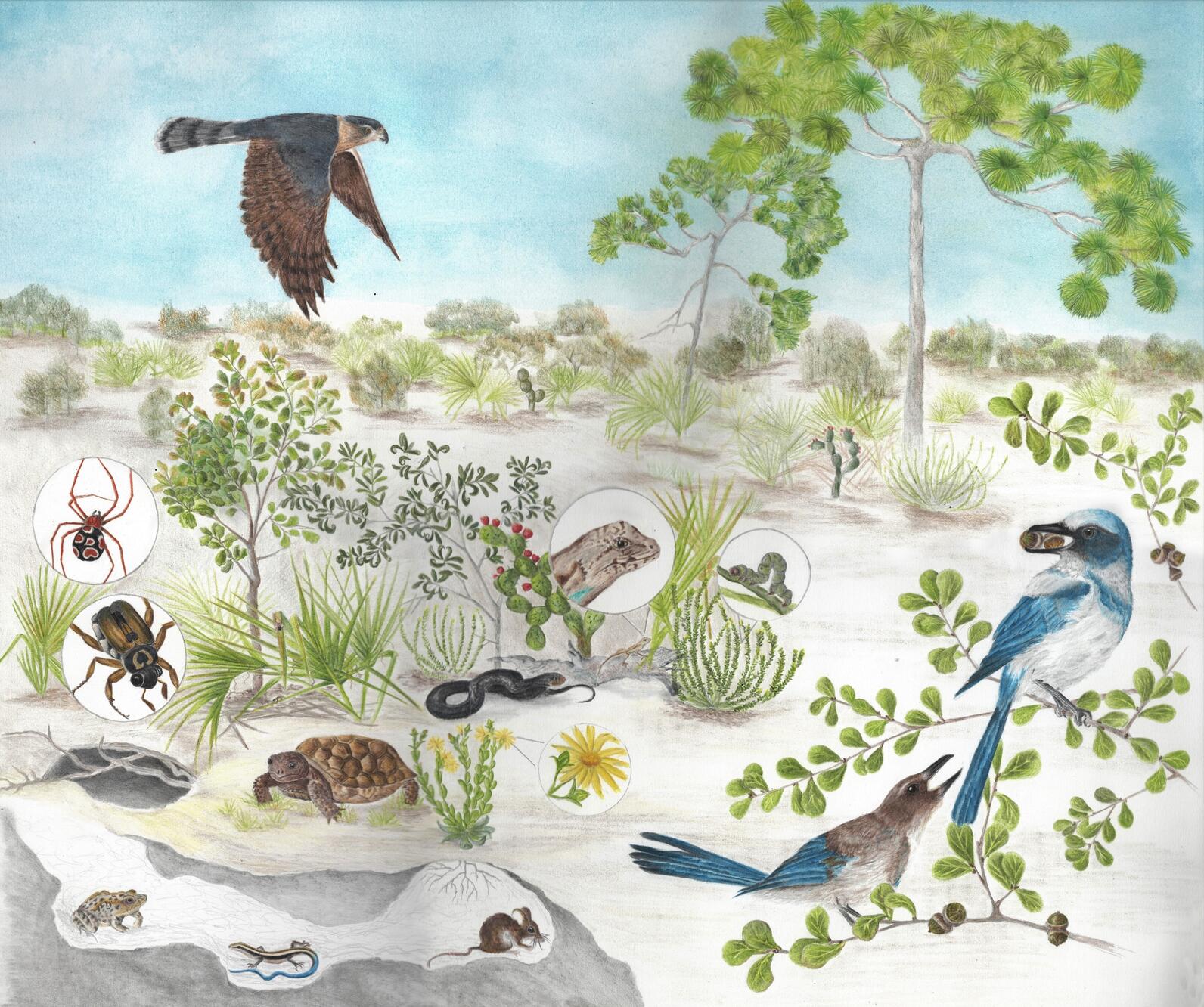Natasza Fontaine studies the avian world in a myriad of ways, from visually identifying birds, to recording their songs, to sketching their likeness. She has illustrated a Painted Bunting for Corkscrew Swamp Sanctuary's upcoming field guide update, as well as Audubon Adventures: The Curious Case of the Florida Scrub-Jay. She was named the 2024 artist behind the American Birding Association's Bird of the Year: the Golden-winged Warbler. We sat down with her to ask about her inspiration and process.
How did you become interested in illustrating what you see in the natural world? Have you always been drawing?
Since I can remember, I have only had an interest in drawing the natural world. I never really had any desire to illustrate people, buildings, or any other man-made objects. As a kid, when I “scribbled,” I only drew pictures of dogs, horses, birds, trees, and flowers. I spent a lot of time looking at the photographs in nature magazines just copying what I thought was interesting.
When you're doing a botanical or avian illustration, is the process different than other artwork that you do? What do you pay attention to? What do you want to translate to the page?
I primarily draw flora and fauna. My process for botanical illustration varies a bit depending on the species. I have re-created plants from herbarium specimens but what I enjoy most about botanical illustration is that I’m able to do a bit more en plein air work (i.e. drawing outside).
Although plants aren't moving, when I'm illustrating a plant, it can be more intense. As lighting, temperature, and moisture fluctuate during the day, by the minute, plants change with it and shapes change too (e.g. open flower vs. a closed flower). Being able to catch the subtleties in these changes can be a race for time! When this happens, I start to improvise a bit but with the goal of maintaining the integrity of the plant or landscape.
When it comes to bird illustration, I usually have several resources that I gather information from. I: 1) Go in the field and make a few field sketches 2) Record written and mental observations 3) Refer to museum specimens and images (when I have access to them). Using all the information I gather, I come up with an idea of how I would like the bird to be seen on paper.

Does your illustration inform your birding and vice versa?
Most definitely! Illustration really helps make connections when it comes to identification. When I’m illustrating, I do my best to be as accurate as possible. When feasible, I study the bird in the field as well as an example in a museum collection. I look through the Peter Pyle Guide, the Crossley Guide, and well, all the guides I have. I like to make sure that the feather count, special field marks, and colors are correct.To me, that is the best way of being as accurate as possible.
As an example, when working on my Florida Scrub-Jays for Audubon Adventures (linked here), I spent a few weekends out at Ocala National Forest just sitting and observing scrub-jays and their interaction with each other and the habitat. I sketched the plants and studied the space between the plants. It's very rare that I will misidentify a species after I have drawn it. After sketching a bird, it's almost as if I’ve had it in hand—it becomes very personal. It's that intense study to illustrate accurately that really solidifies the identification for me in the field.
For people who want to take their own sketchbooks outside to reflect what they see, how do you recommend they get started?
First, I suggest using a notebook that you really like—something special dedicated to this one activity. Then, it's really about setting aside the time. You don’t need an endless number of hours to get started or to keep going —committing to about an hour once a week would be a great way to start. During that time, set an alarm and then put your phone on Do Not Disturb. This will help you focus, and you can't use the excuse of "checking the time" to then be distracted by checking your messages, the news, or just scrolling. Lastly, do your best to scribble. I like to say scribble because it’s a way to eliminate the pressure of perfection. Most people get discouraged when starting a nature journal because there is a stigma that it should be this beautiful, accurate, and perfect book. That's not true for everyone. Just remember, it's your book, your perspective, and your time to “scribble” and become familiar with what you see.
After viewing your illustrations, what do you want people to remember and walk away with?
I would like people to be inspired to find more out about the creature in the illustration and to consider connections. So, for example, in my Painted Bunting illustration (pictured above) I added the American beautyberry plant. I would like the viewer to wonder “Hmm that’s a bright purple fruit, what is it and why would it be drawn with this bird, what is the connection? Where was she going with this idea?” In most of my illustrations, I like to have fun presenting the not-so-obvious connections between my subjects.
Additionally, I would like the viewer to think about the various pigments found in my illustrations or appreciate the lack of color since, often enough, I draw in graphite tones of blacks and greys. When a viewer is looking at one of my graphite pieces (drawn in pencil), I hope the lack of color inspires them to focus on the beauty and variation in the form of the species.
Essentially, I want everyone viewing my work to leave with a sense of wonder and curiosity about the natural world.
To read about Natasza Fontaine and Robert Gundy's Florida Big Year in 2020, click here.





